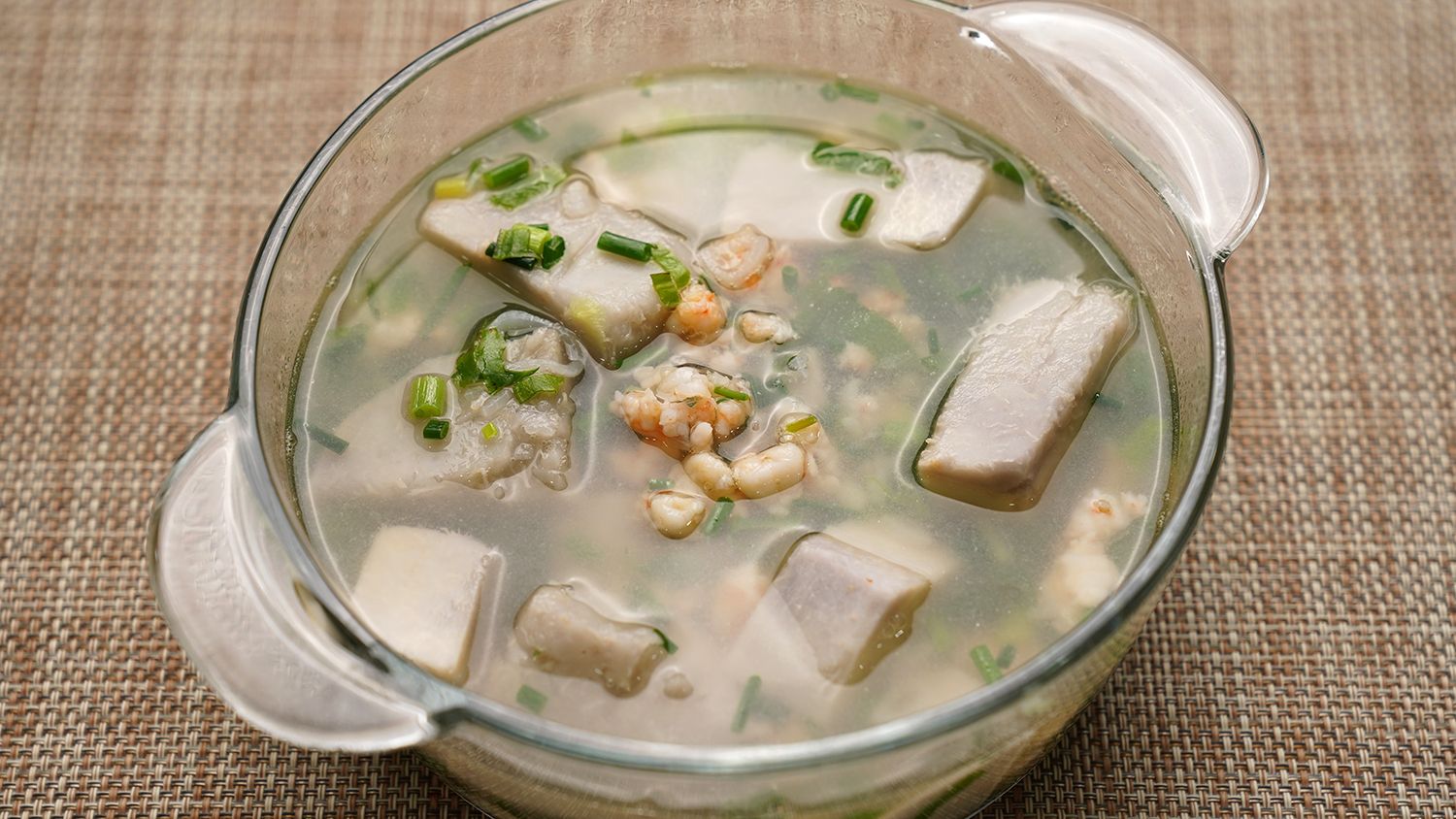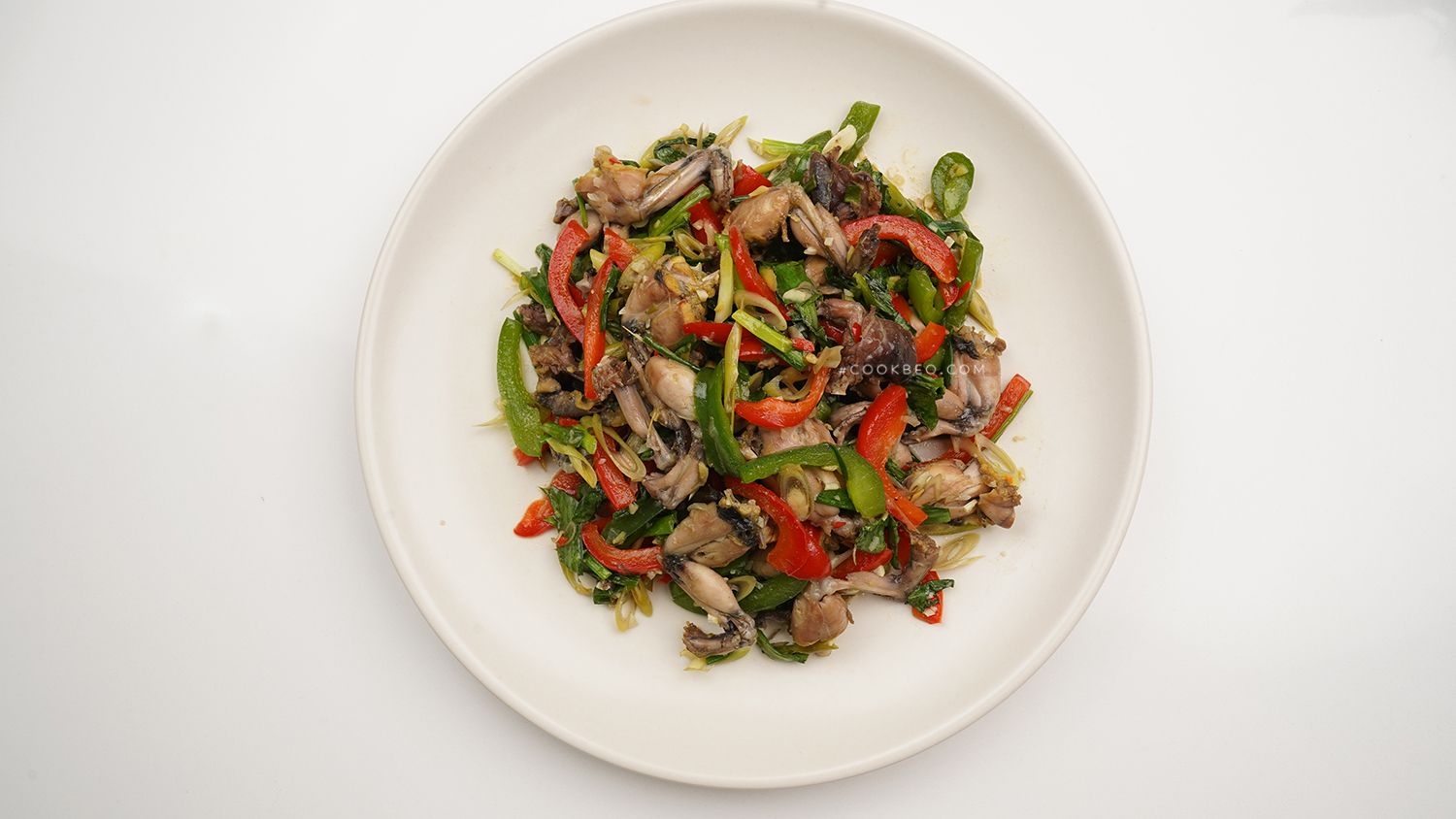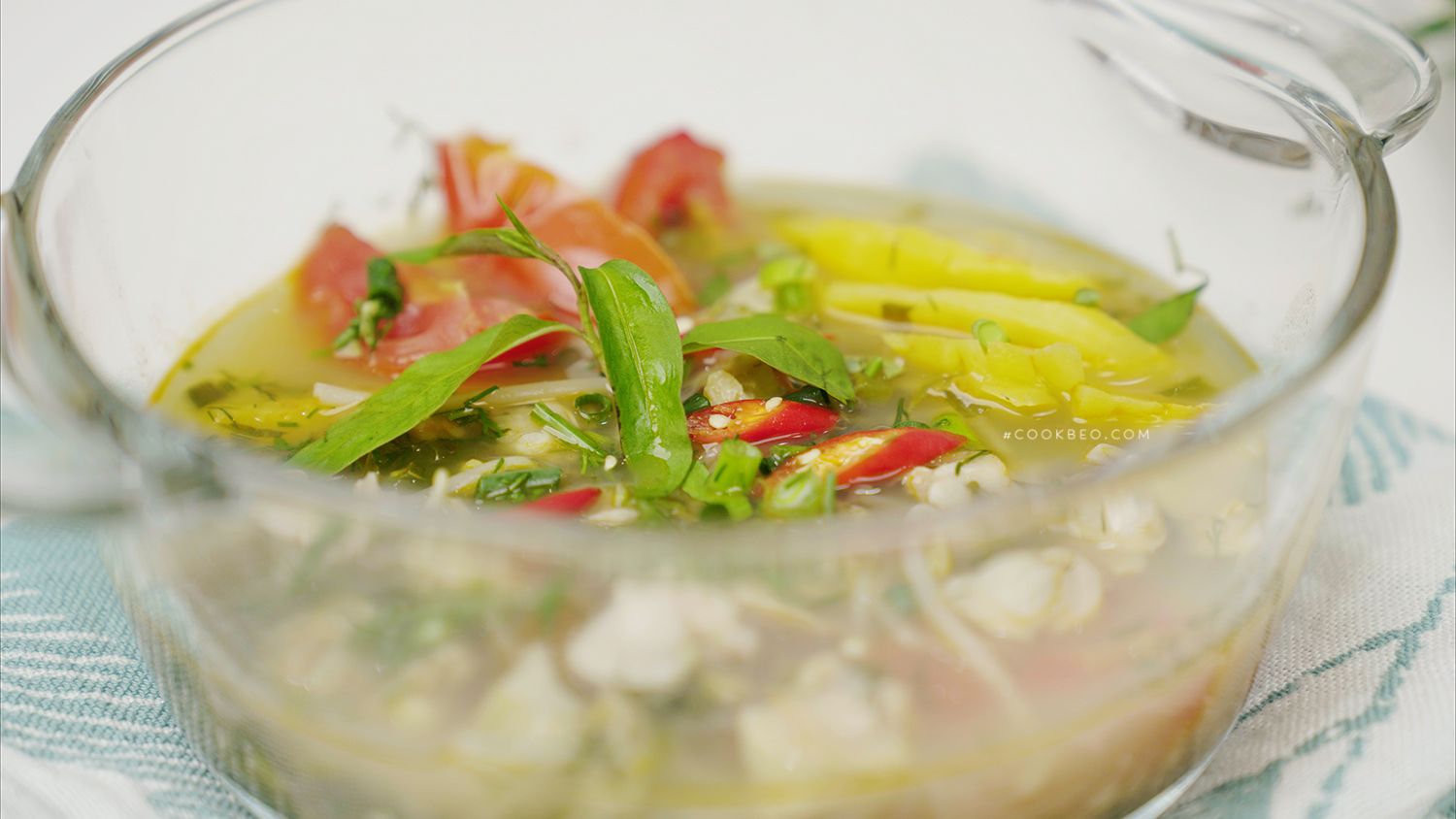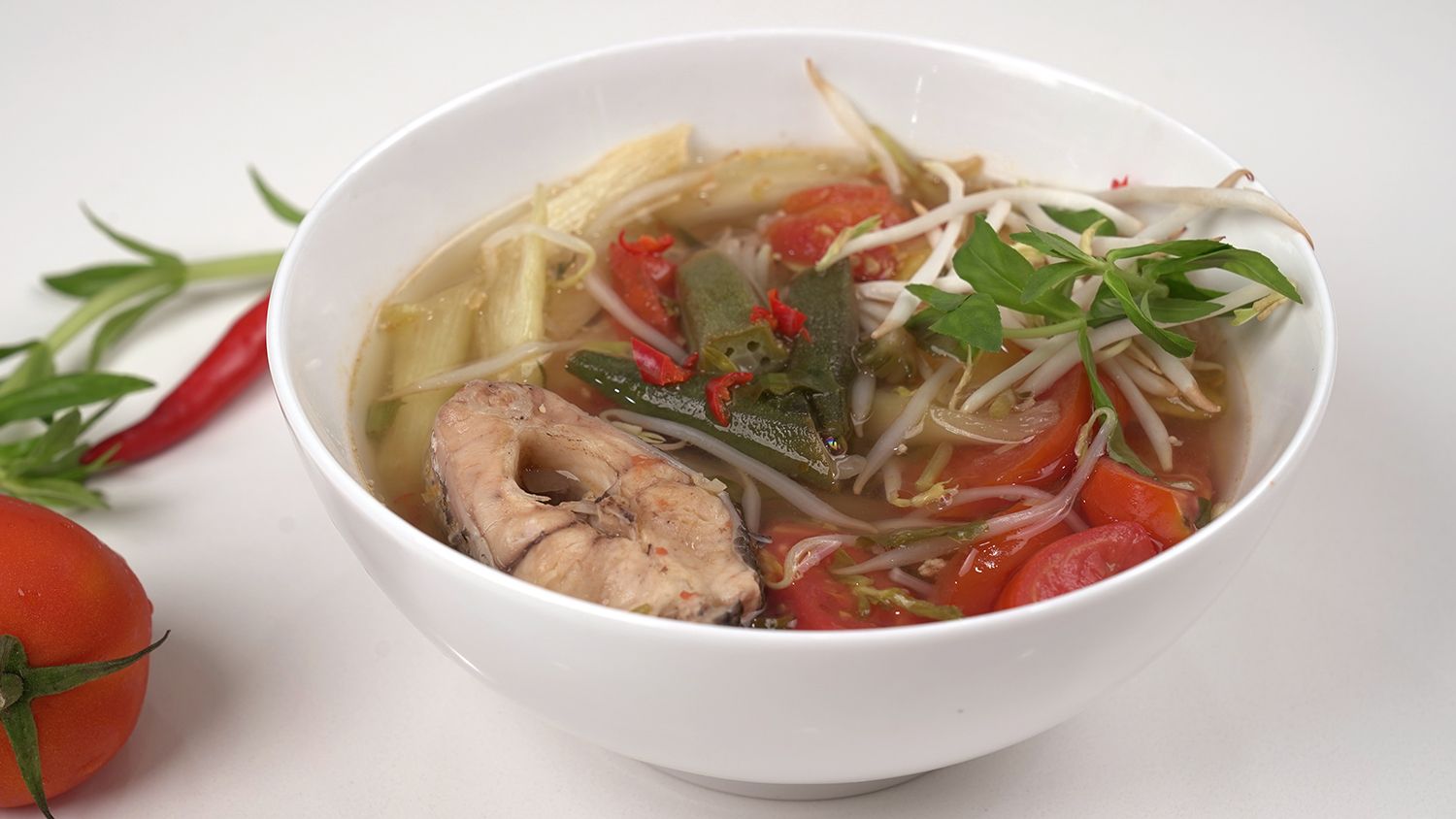How to Make Vietnamese Mackerel in Tomato Sauce
Mackerel in Tomato Sauce is a delicious and nutritious dish, but if not prepared properly, it can retain the fish's distinctive smell. In this article, Cookbeo will show you how to properly prepare mackerel and cook it without any fishy smell, resulting in firm, flavorful fish that pairs perfectly with rice.

Ingredients
- 300g mackerel fillet
- 3 tomatoes ~ 300g
- Tomato sauce
- 3 shallots, 1 piece of ginger
- Turmeric powder or 1 fresh turmeric root
- Spring onions, dill
- 1-2 fresh chilies
- 100ml fresh tea
- Seasonings: Fish sauce, oyster sauce, sugar, MSG, seasoning powder, turmeric powder, ground pepper, ketchup

Ingredient Notes
To make mackerel in tomato sauce, you can use fresh mackerel or grilled mackerel.
 Fresh mackerel
Fresh mackerel
Cookbeo also uses fresh tea to neutralize the fishy smell, but you can replace it with dry tea. If you don't have tea, don’t worry—it won't affect the flavor of the dish too much.
The recipe also uses tomato sauce. This helps thicken the sauce and gives it a nice color and fragrance. If you don't have tomato sauce, you can use extra tomatoes instead.
Additionally, ketchup is used to enhance the color and flavor of the dish.
Instructions
Remove the Fishy Smell from Mackerel
For fresh mackerel, start by removing the fins, gills, and guts, and make sure to scrape off the black membrane from the belly. Then, rub the fish with coarse salt, paying attention to the whole body and belly, and rinse well.
To further reduce the smell, rub the fish with coarse salt or rinse it with ginger wine if available. Rinse again and pat the fish dry.
Avoid soaking the fish too long, as this can strip away nutrients and cause the flesh to lose its color and freshness.
Marinate the Mackerel
Marinating the mackerel also helps reduce the fishy smell. Marinate the fish with:
- 1 teaspoon seasoning powder
- 1 teaspoon fish sauce
- 1/2 teaspoon ground pepper
- 1/2 teaspoon turmeric powder for color and to reduce odor
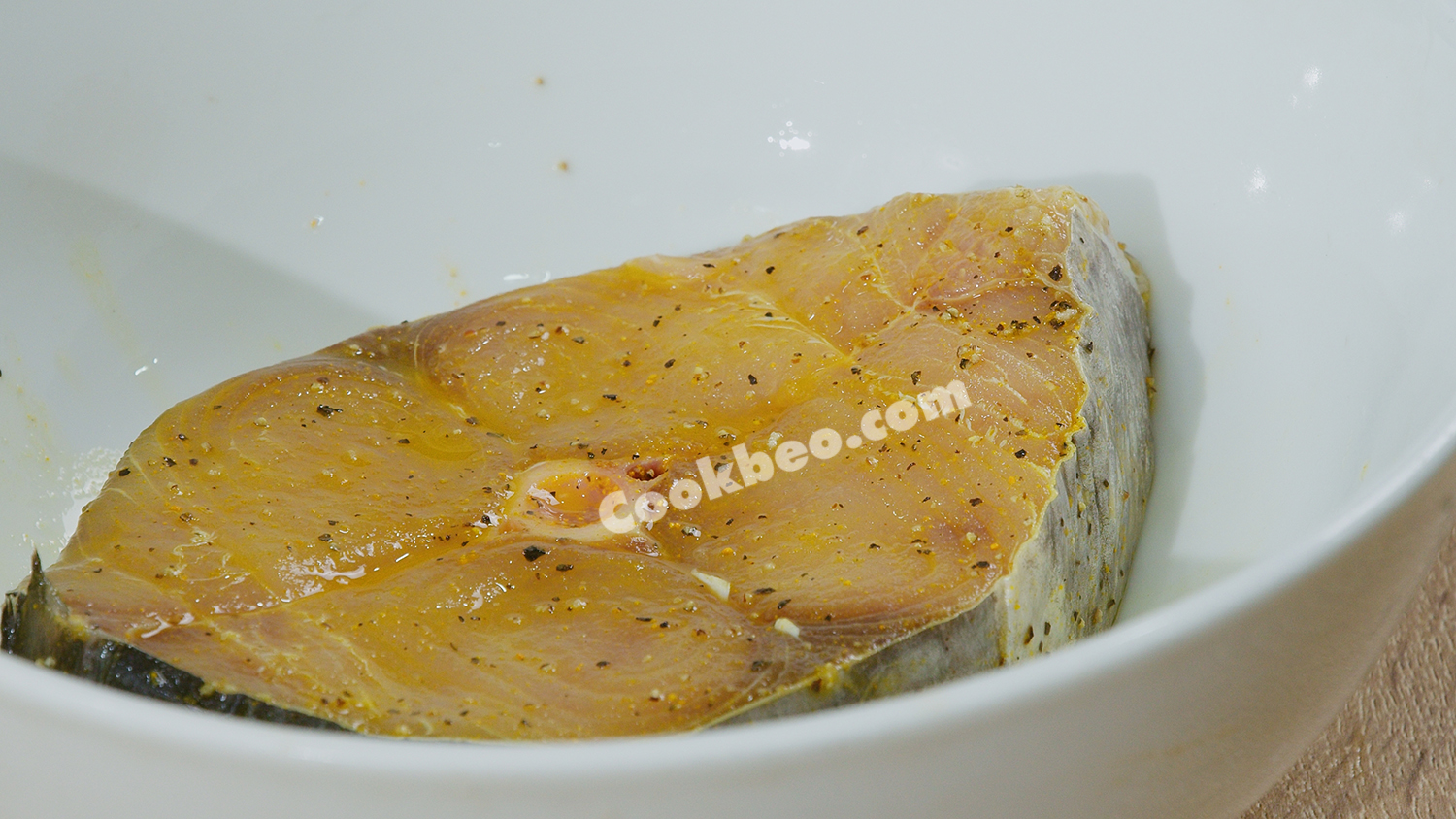
Prepare other ingredients:
Wash the tomatoes, dice most of them to make a thick sauce, and cut the rest into wedges to add near the end for freshness and appearance.

Peel and finely chop shallots. Clean and slice ginger, saving some slices for frying the fish, and mince the rest.

Wash and chop spring onions and dill. You can slice the scallion whites into long, thin strips for decoration.
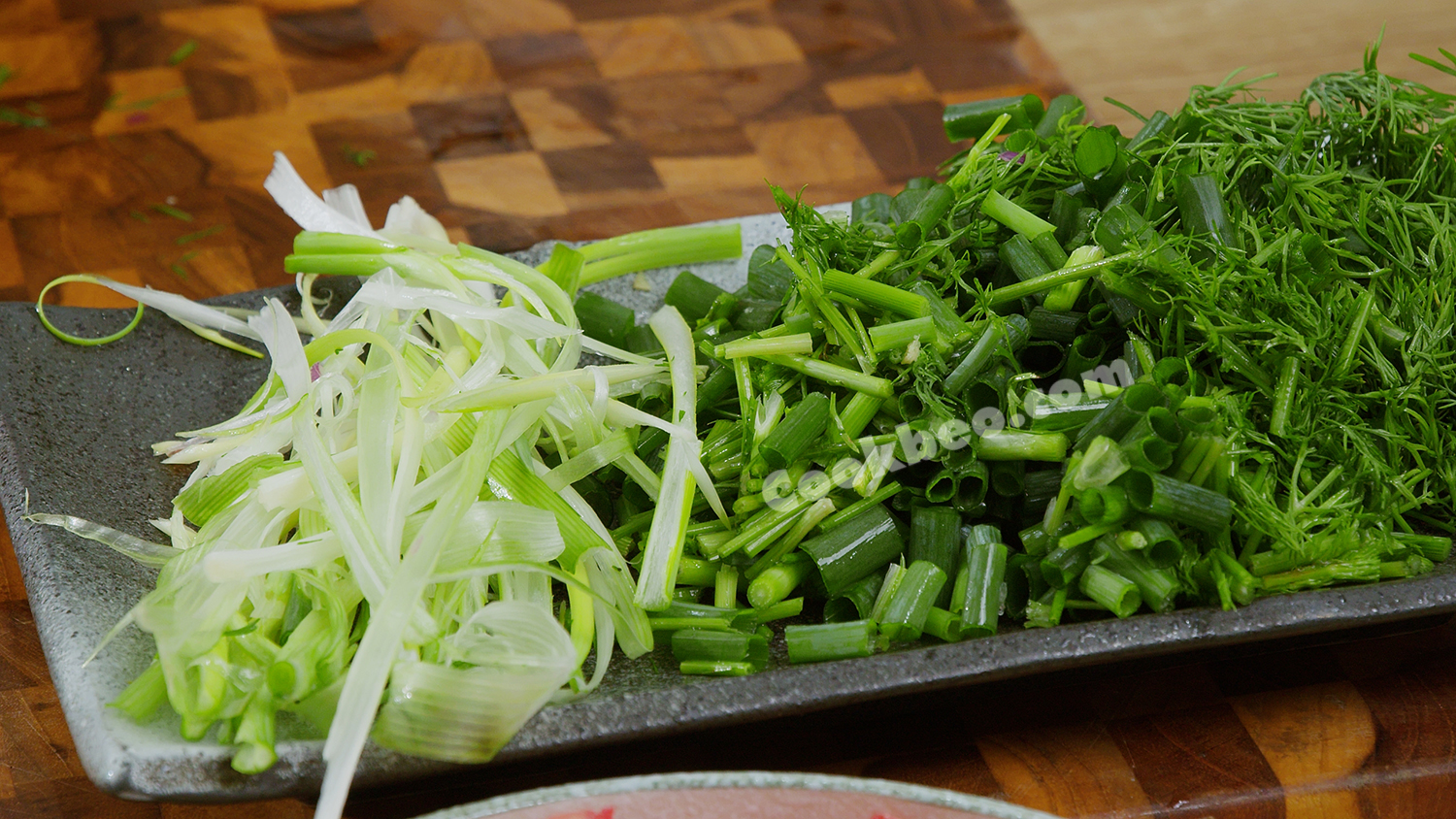
Fry the Mackerel
One of the keys to making delicious mackerel in tomato sauce without a fishy smell is frying the fish first, whether it’s fresh or pre-grilled. Frying enhances the flavor and texture of the fish.
Heat some oil in a pan, just enough to lightly fry the fish. Add some sliced ginger for aroma.
When the oil is hot, fry the mackerel until both sides are golden. Avoid overcooking to prevent the fish from drying out.
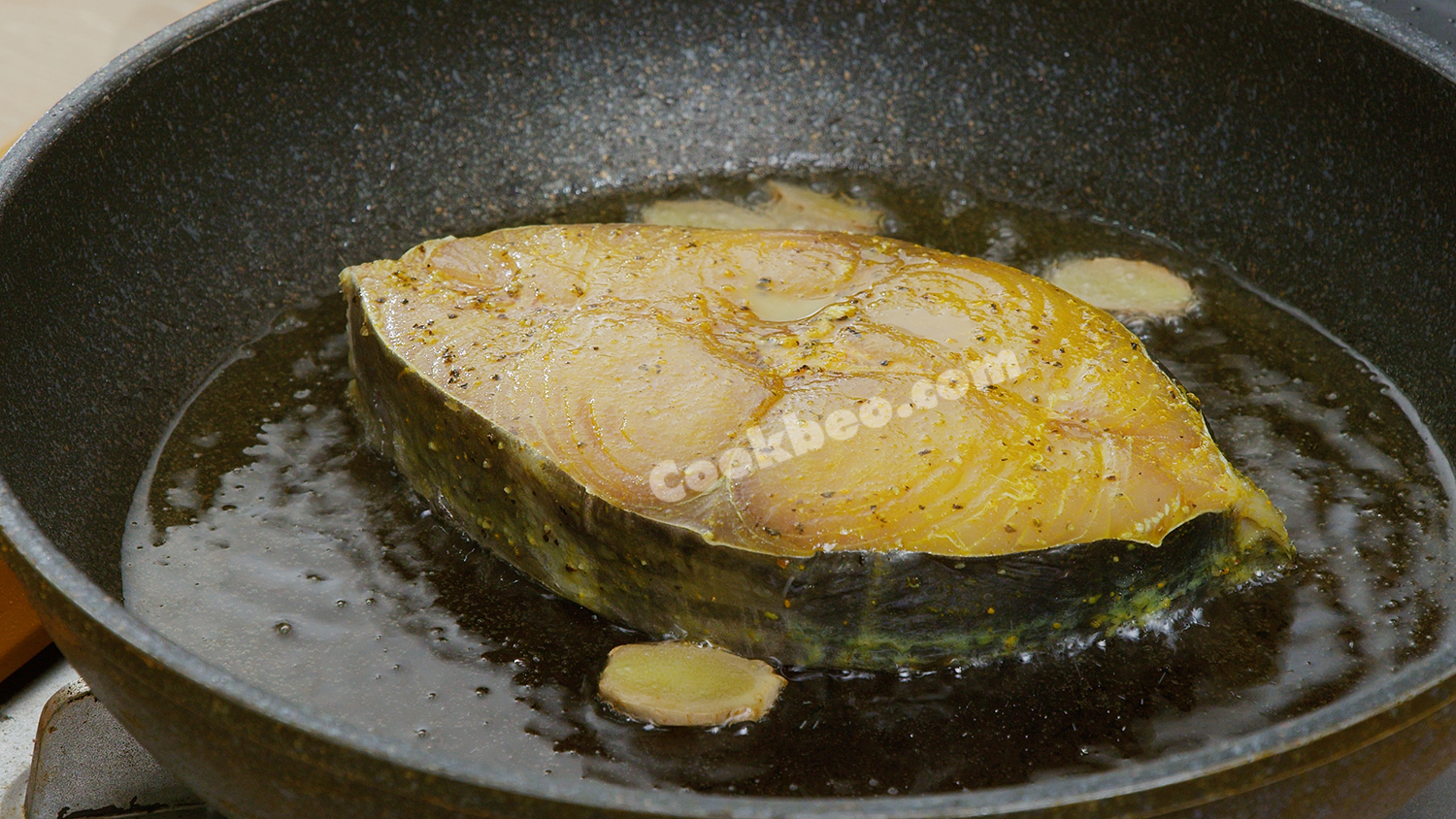
Once fried, transfer the fish to a separate plate.
Cook Mackerel in Tomato Sauce
Add 3 tablespoons of cooking oil (from the pan used to fry the fish) to a deep pan or pot, and sauté the shallots and ginger until fragrant. Then add the diced tomatoes and stir well. You can add 1 teaspoon of salt to help the tomatoes soften faster and become more flavorful.
Once the tomatoes are soft, season the sauce with:
- 2.5 tablespoons tomato sauce
- 1 tablespoon ketchup
- 2.5 tablespoons fish sauce
- 1 tablespoon oyster sauce
- 1 tablespoon sugar to balance the sourness
- 100ml green tea

Stir well, and when the sauce comes to a boil, add the mackerel and spoon the sauce over the fish.
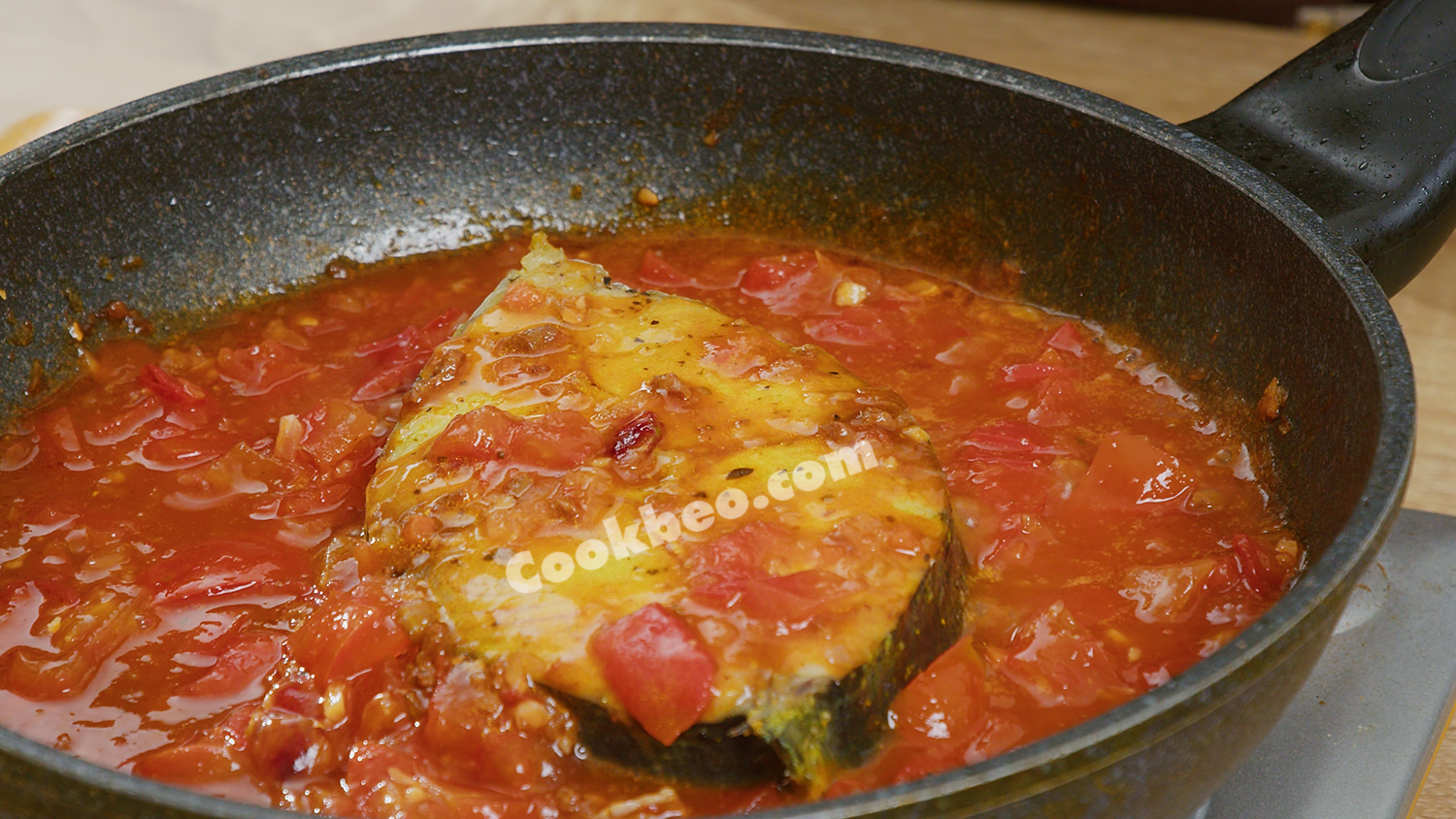
Cover the pan and continue simmering the mackerel in tomato sauce for about 10 minutes over medium-low heat. During cooking, you can turn the fish to coat all sides in the sauce. If you want a thicker sauce, cook for longer to reduce the liquid.
After about 10 minutes, when the sauce has thickened, add the tomato wedges and adjust the seasoning to taste.
Cook for another 2-3 minutes, then remove the mackerel from the pan.
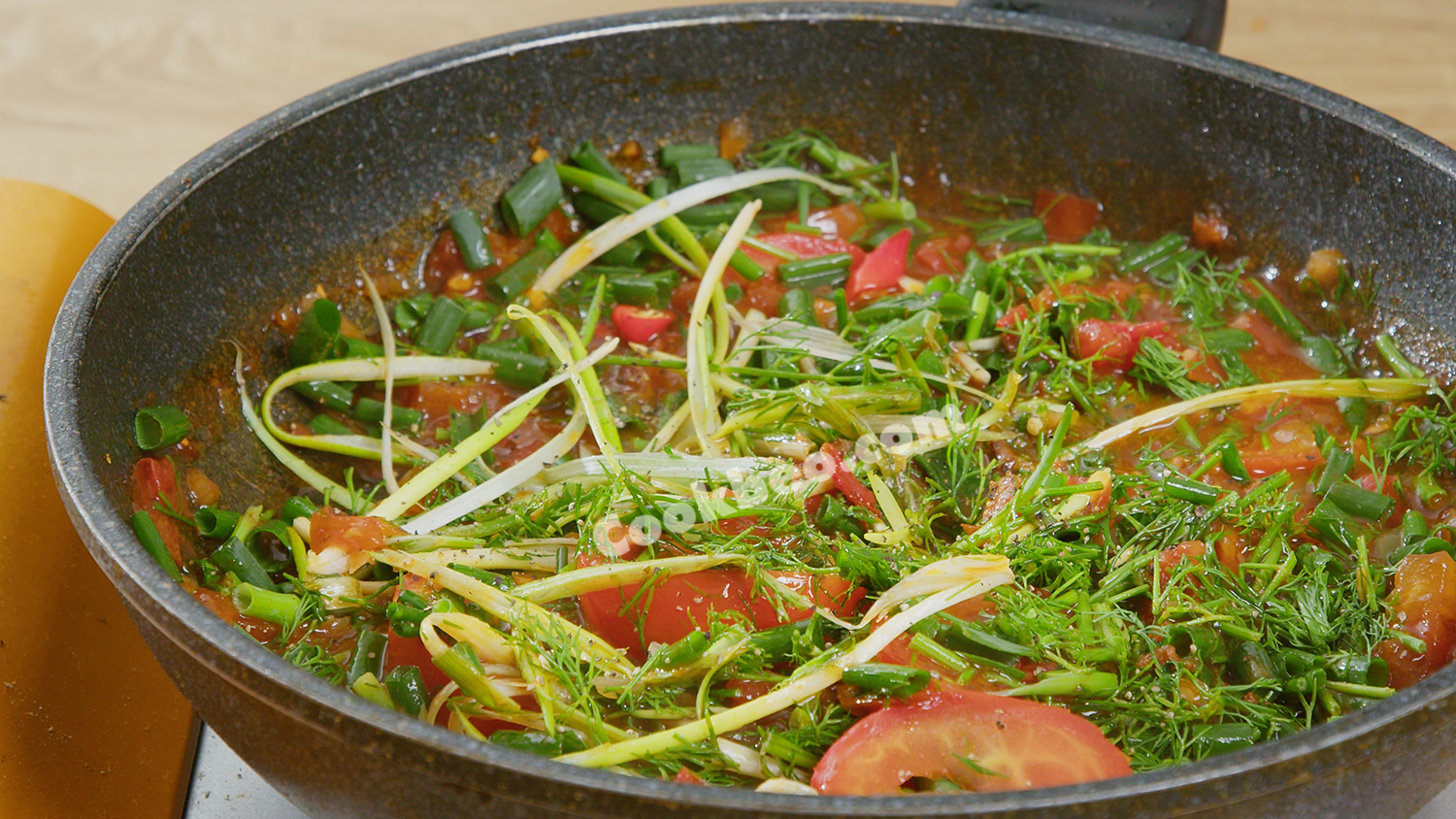

Final Product Requirements

This mackerel in tomato sauce is fragrant, with no fishy smell. The sauce is thick, mildly sour, and flavorful. The fish is tender and sweet, perfect with rice. For the best taste, serve the dish hot. If left to cool, the fish may develop a fishy taste, making the dish less appealing.
You can also add pineapple to the dish for a variation of mackerel in tomato-pineapple sauce. Just be careful not to add too much pineapple, as it can make the dish overly sour.
Tips & Notes
- When cooking mackerel in tomato sauce, leave the lid off to allow the fishy smell to evaporate. Lower the heat so the mackerel softens and the sauce doesn't dry out.
- Avoid storing mackerel and tomato dishes overnight, as they can become harmful. Be sure to prepare just enough for one meal.
Additional Information
How to Choose Fresh Mackerel
Mackerel is caught at sea and kept on ice before being sold. Therefore, it's important to distinguish between fresh fish, fish that has been stored too long, and spoiled fish. Choosing fresh mackerel impacts both the taste of the dish and the health of those eating it.
Experienced chefs recommend looking for mackerel with a white belly, grayish-green fins, and shiny skin. Additionally, if the gills are bright red, the fish is freshly caught. If the gills are dull red or pale, the fish is no longer fresh.
Also, fresh mackerel has clear, bulging eyes. If the eyes are cloudy or sunken, the fish is not fresh.
When pressing on the flesh, it should be firm and bounce back, a sign of freshness. If the fish is soft, it's likely not fresh.
Fresh mackerel should also have a distinct ocean scent, not a foul odor. If the fish smells like chemicals or oil, it may have been caught in polluted waters and should be avoided.
How to Remove Fishy Smells from Kitchen Utensils
For knives and cutting boards: Use rice water, white vinegar, or regular vinegar to clean knives and cutting boards after preparing fish.
For pots and pans: Use a mixture of baking soda, dish soap, and white vinegar to scrub cookware, or rinse with dry tea leaves before cleaning as usual.









